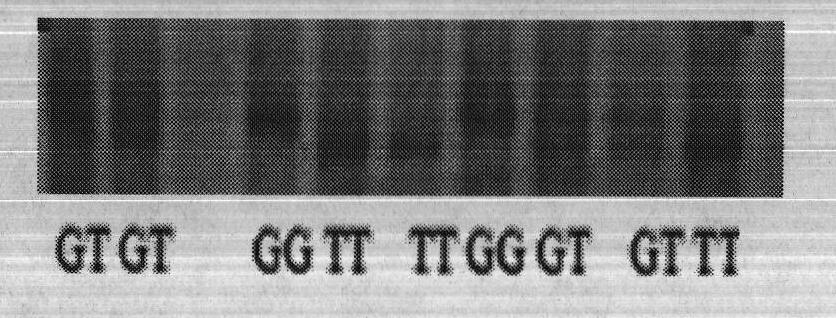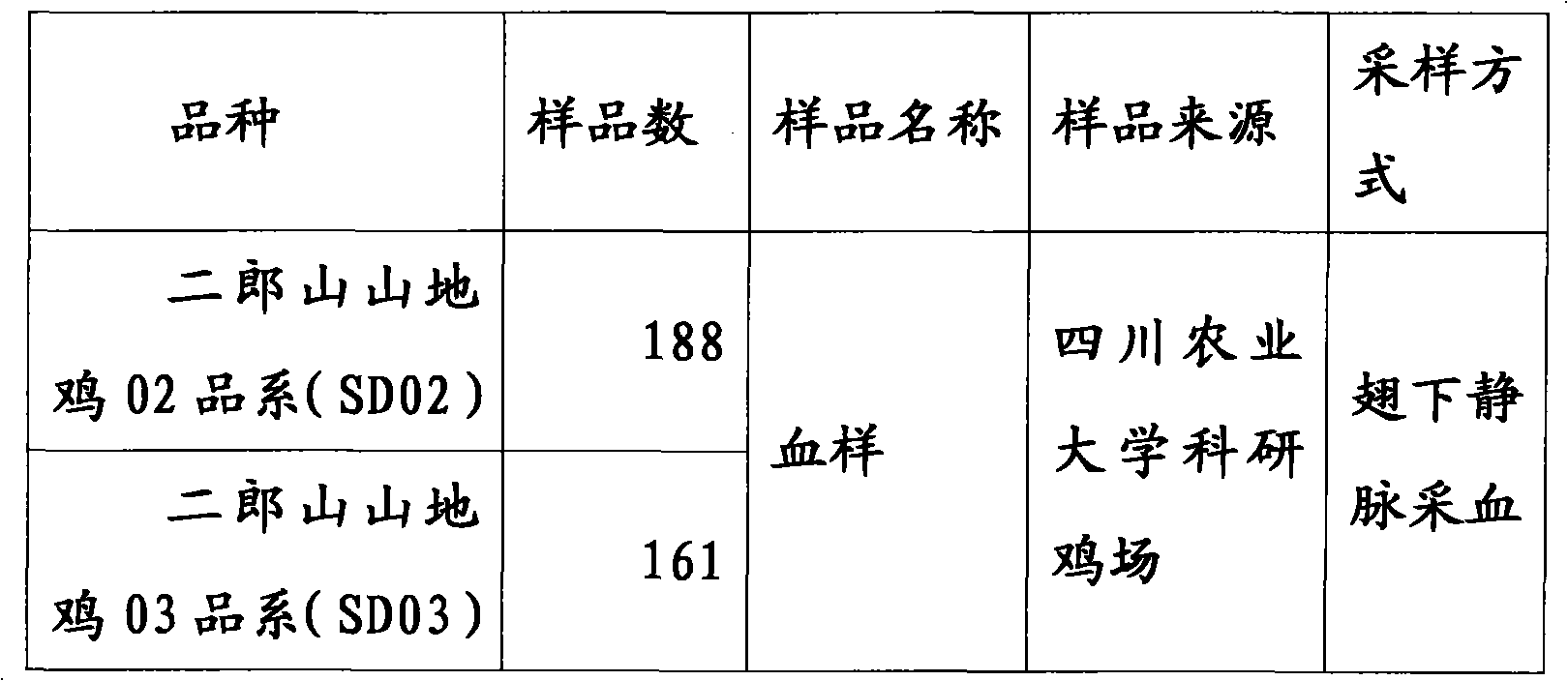Testing method and application of hereditary variation of CRBPI (Cellular Retinol-Binding Protein Type I) gene of chicken
A detection method and technology for genetic variation, applied in the field of detection of genetic variation, can solve the problems of lack of research and no genetic variation of chicken CRBP1 gene, etc.
- Summary
- Abstract
- Description
- Claims
- Application Information
AI Technical Summary
Problems solved by technology
Method used
Image
Examples
Embodiment Construction
[0023] The present invention will be described in detail below in conjunction with specific embodiments.
[0024] (1) Design of specific primers: A single nucleotide polymorphism that may cause splice site activity and affect gene function due to codon mutation at position 14604 of the chicken CRBP1 gene. .2REGION: 6984276..7001797) as a reference, using Primer5.0 to design PCR primers capable of amplifying the 14604 site, the primer sequence M pair is: upstream primer: TAAATTTATAGTTGCGGTCAT (14480 ~ 14500), downstream primer: AGTTCCAGGTGACGGGTGAG (14780 ~14799). The length of the amplified fragment is 320bp. The blood samples of different strains and individuals were mixed into a DNA pool and then amplified with the pair of primers to obtain a fragment of the same size as the target fragment. After bidirectional sequencing and identification, it was compared with the sequence published by NCBI and found that there was a G / T at position 14604 polymorphism.
[0025] (2) Coll...
PUM
 Login to View More
Login to View More Abstract
Description
Claims
Application Information
 Login to View More
Login to View More - R&D
- Intellectual Property
- Life Sciences
- Materials
- Tech Scout
- Unparalleled Data Quality
- Higher Quality Content
- 60% Fewer Hallucinations
Browse by: Latest US Patents, China's latest patents, Technical Efficacy Thesaurus, Application Domain, Technology Topic, Popular Technical Reports.
© 2025 PatSnap. All rights reserved.Legal|Privacy policy|Modern Slavery Act Transparency Statement|Sitemap|About US| Contact US: help@patsnap.com



